Wieliczka Salt Mine, Krakow - A History [Part I]
As you may know, #Steemfest3 took place in Krakow, Poland. It's an exceptionally beautiful city, and one I couldn't wait to revisit.
One of the universally accepted highlights of Steemfest was the closing dinner on the final night, an unforgettable experience which many fellow attending Steemians will remember for many years to come.
Its location? The famous Wieliczka Salt Mine.
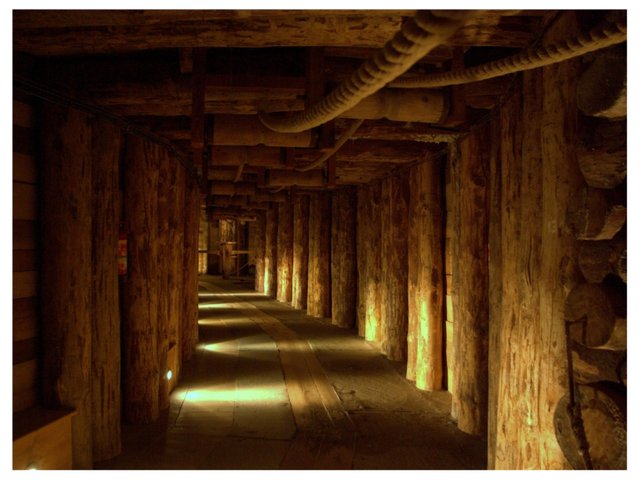
I made an effort to try and capture as many facts as possible from our tour guide, and I've tried to tie in a little extra research for this post, so here goes:
Wieliczka Salt Mine, Krakow - A History
The Wieliczka Salt Mine dates back to the 13th century, and was a significant source of wealth and prosperity for the city of Krakow in an age where salt had both practical uses and significant financial value.
For context, other notable events in the 13th century included Genghis Khan's invasion of China (1211) and the birth of theologian and philosophier Thomas Aquinas (1225). Even if you're not familiar with these particular events, the points is that they were a very long time ago. The United States of America that we know today was founded five whole centuries later, in 1776.
Anyway, back to the mine.
It is located just a few miles outside of Krakow is described by my Lonely Planet Pocket Krakow [affiliate link] as
an eerie underground world of pits and chambers, filled with finely crafted scultpures and bas-reliefs, and everything has been carved by hand from salt.
Indeed, not only is it visually incredible, but it has been recognised as a World Heritage site for more than 30 years.
On arrival, visitors walk down 380 wooden steps to reach the starting point of the tour. I can assure you that it certainly feels like much more than 380 steps, and looking down the stair well from the very top is quite the sight.
If you're not good with heights, you might not want to look down the stairwell on entry into the mine...
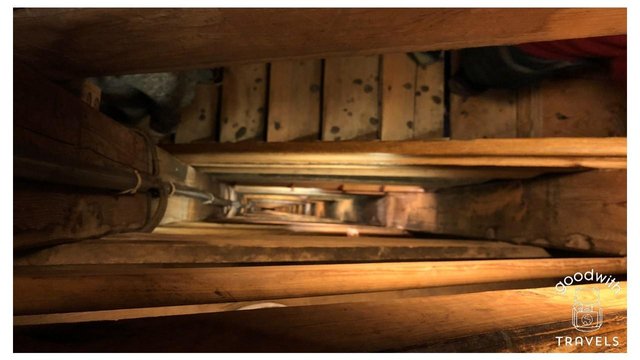
Once you get to the bottom, you're around 115 metres underground and tourists only visit 1% of the total length of the tunnels in the salt mine. In fact, it is reportedly home to over 175 miles / 280 km of tunnels.
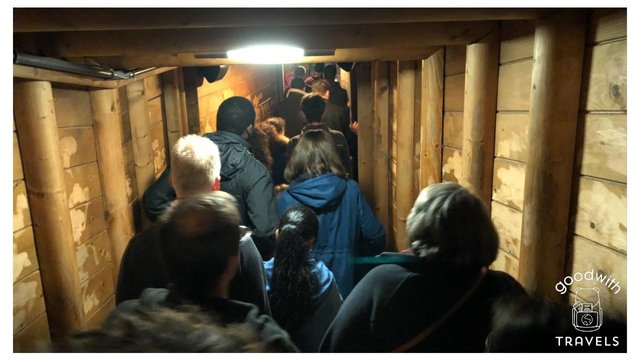
What particularly struck me was therelative size and comfort for tourists to walk around in, with lighting, toilets and a reasonable room temperature. The picture above is one of the smaller tunnels, with many opening up to become large, echoing chambers.
This would have been extremely different to the experience of the miners, many of whom would have worked back-breaking labour (shifts were 8 hours a day with minimal rest, 6 days a week). These conditions were apparently enviable compared to other mines, which may put our day to day work into comparison.
Another key difference is that while you and I might take the stairs or a lift, workers would have enterd by climbing ladders all the way down, lit by candlelight.
While we have perfectly prepared floorboards and pathways, miners would have used pickaxes, iron wedges and mallets to gradually grind their way through the rock, inches at a time.
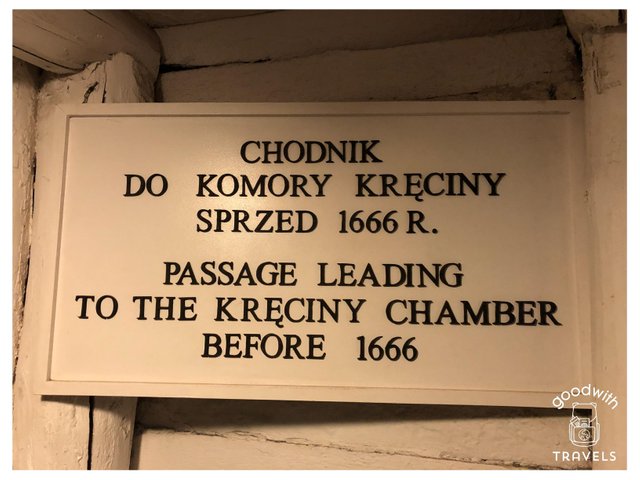
Did you know?
Nicholas Copernicus, 14th & 15th century mathematician and astronomer, was one of the first ever toursists to visit the mine, confirming the fact that we walked in the footsteps of legends.
Perhaps one day, people will look back and say that about Steemfest3!
According to the mine's website,
By the end of the middle ages almost 350 people worked at the Wieliczka salt works, and about 8,000 tonnes of salt were produced annually.
But then, only a century or two later...
The period of glory of the Krakow saltworks is marked from the beginning of the 16th century to the mid 17th century. The mining crew consisted then of almost 2,000 people achieving an output of over 30,000 tones of salt.
Horses were lowered down on ropes on a 'one way ticket', used to power the turning shafts. These were generally used either to raise/lower the pulleys or to pump out water. Either way, they lived a pretty torrid life down there.
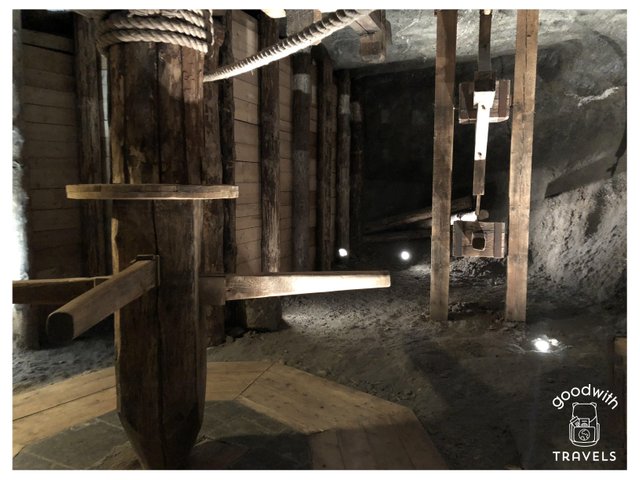
Another fact I found interesting was the presence of dozens of underground chapels built into the mine. The shape and size of each chamber depended on the size of rock salt found and the ease of carving into it, and there were several plain but elegant examples of these places of worship:
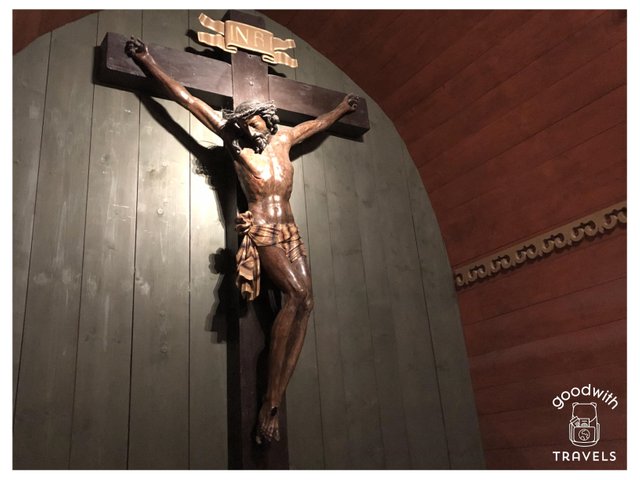
Whether you are religious or not, you can't help but admire the dedication and crafstmanship that went into the work, all this way underground.
The presence of so many of these chambers hammers home the emotional strength they would have provided the miners of the day.
And so we come to a close (of part I, in any case)
Thanks for reading. If you have any thoughts, feedback, suggestions or experiences of the salt mine of your own, let me know!
Part II to follow soon.
Peace
Franck / @goodwithtravels
You created a beautiful story about the work in the mines and how the people did live there with chapels and stuff. I do admire the dedication and craftmanship in all the work there deep under the ground. Totally missed the fact about Nicholas Copernicus while I was there too! 🙈
Thank you my kind man!
Not sure how you missed it... they even have a statue of him in there!
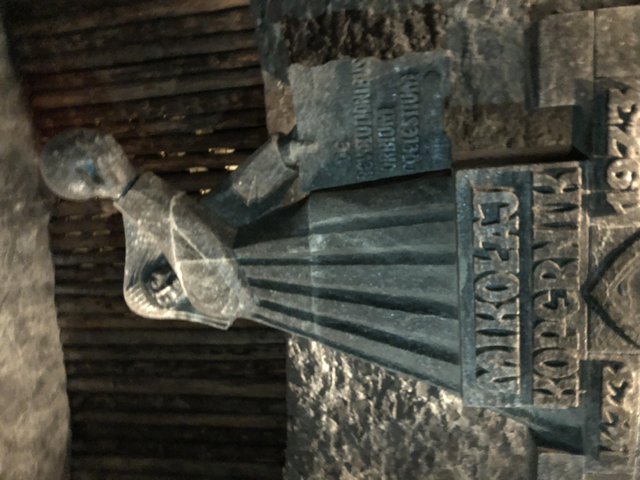
Hehe I’ve seen that one but I think I was to busy talking🤣
Coming to Krakow, a visit to Wielczka salt mine is definitely a must !!! Nice to read of this place I have already been more than ten years ago. I remember from those staircases the black bottom you see from it was larger (when I was there) maybe the perspective of your photos or simply it looks a bit changed nowadays. Anyway I have a good memory of this place.
Absolutely! It was my second visit to Krakow and I'll happily revisit a third time.
Thanks for reading... Part II going up shortly.
Hiya, just swinging by to let you know that this post made the Honorable Mentions list in our daily Travel Digest. Please drop by to check out all the rest of today's great posts and consider upvoting the Travel Digest if you like what we're doing.
Thanks @steemitworldmap - appreciate it.
Congratulations, Your Post Has Been Added To The Steemit Worldmap!
Author link: http://steemitworldmap.com?author=goodwithtravels
Post link: http://steemitworldmap.com?post=wieliczka-salt-mine-krakow-a-history-part-i-83eba7313d5dbest
Want to have your post on the map too?
Thanks for using eSteem!
Your post has been voted as a part of eSteem encouragement program. Keep up the good work! Install Android, iOS Mobile app or Windows, Mac, Linux Surfer app, if you haven't already!
Learn more: https://esteem.app
Join our discord: https://discord.gg/8eHupPq
Congratulations! Your high-quality travel content was selected by @travelfeed curator @guchtere and earned you a reward, in form of a 100% upvote and a resteem. Your work really stands out! Your article now has a chance to get featured under the appropriate daily topic on our TravelFeed blog.
Thank you for being part of the TravelFeed community!
Learn more about our travel project on Steemit by clicking on the banner above and join our community on Discord
Great post about the salt mines. It's really incredible to think how all the miners lived and the shear amount of work they could get through despite the conditions and limited "technology" to lower the horses down there too. Thanks for the interesting read!